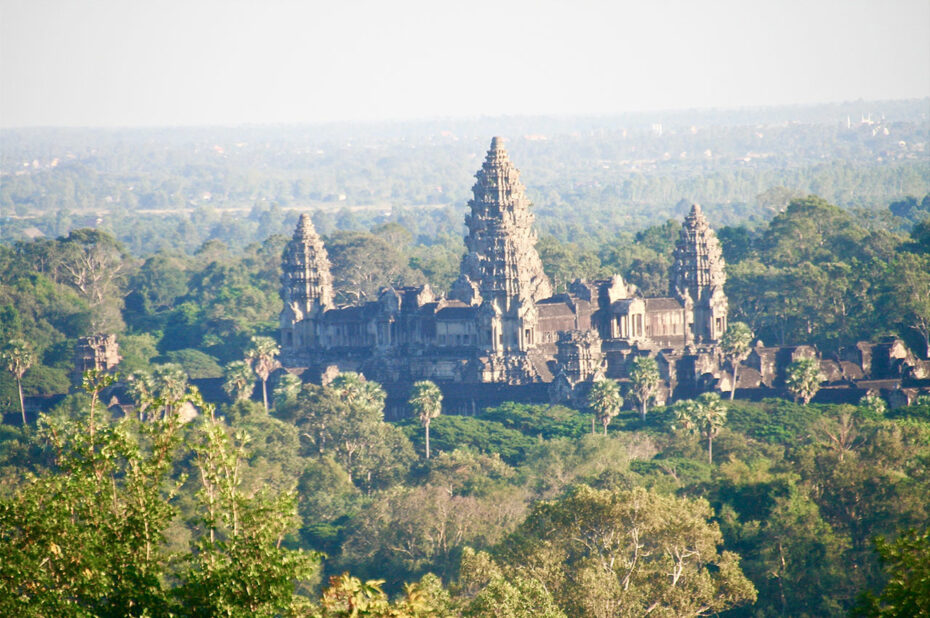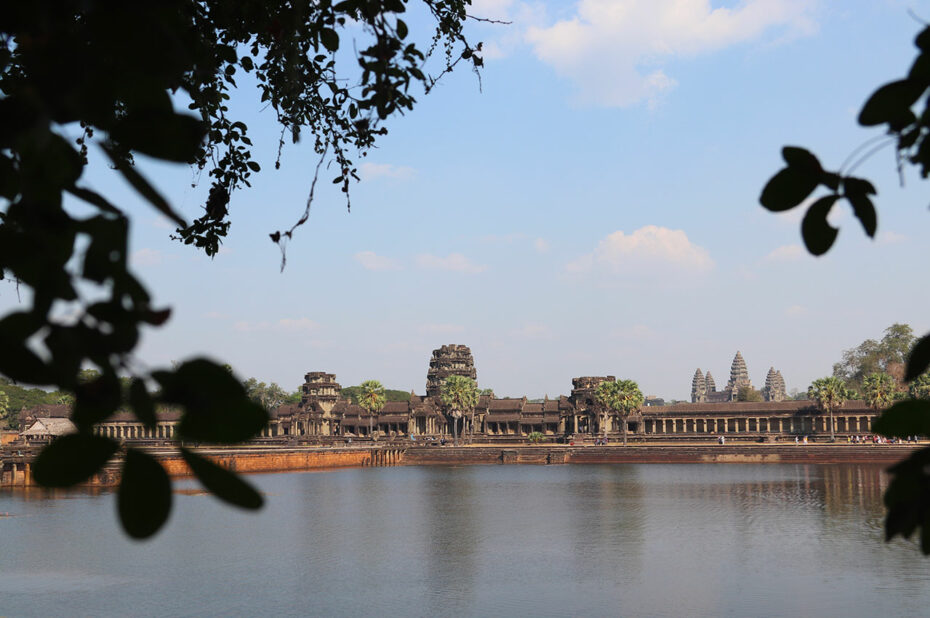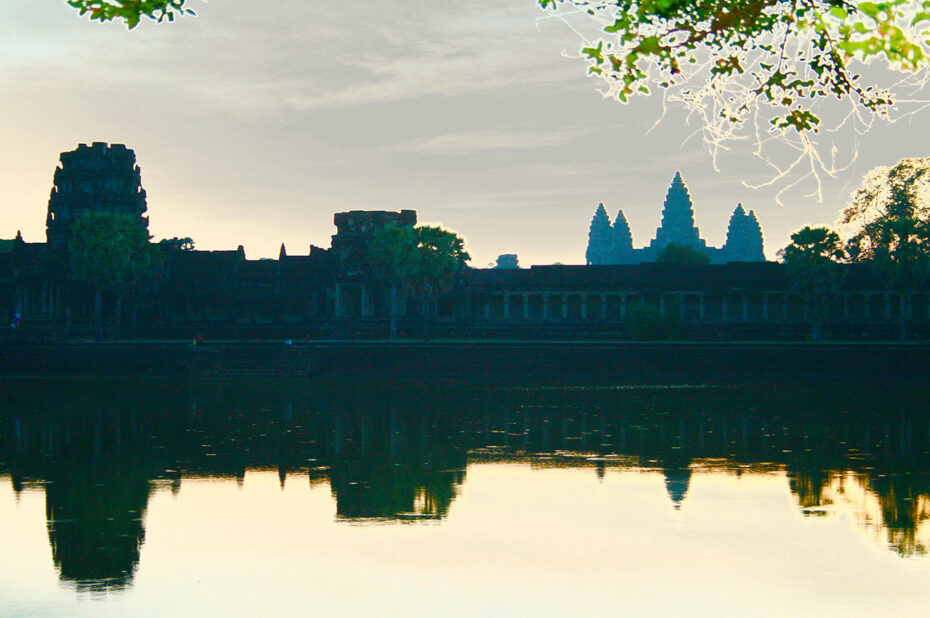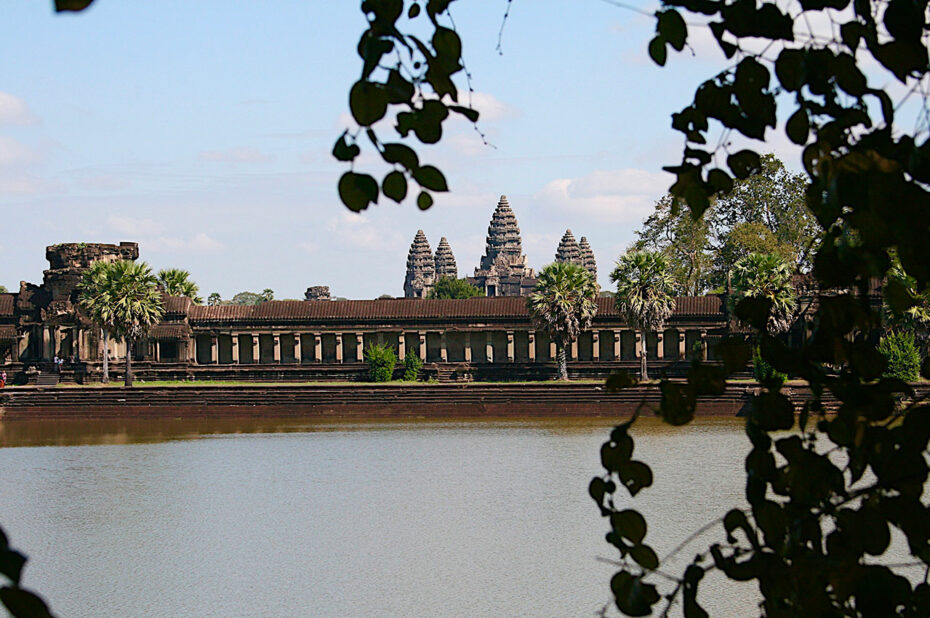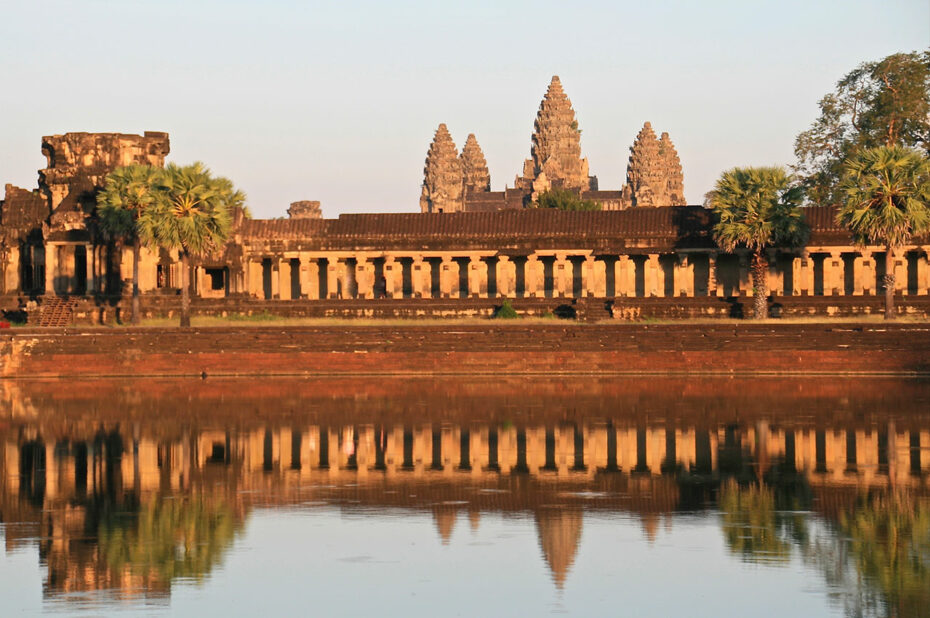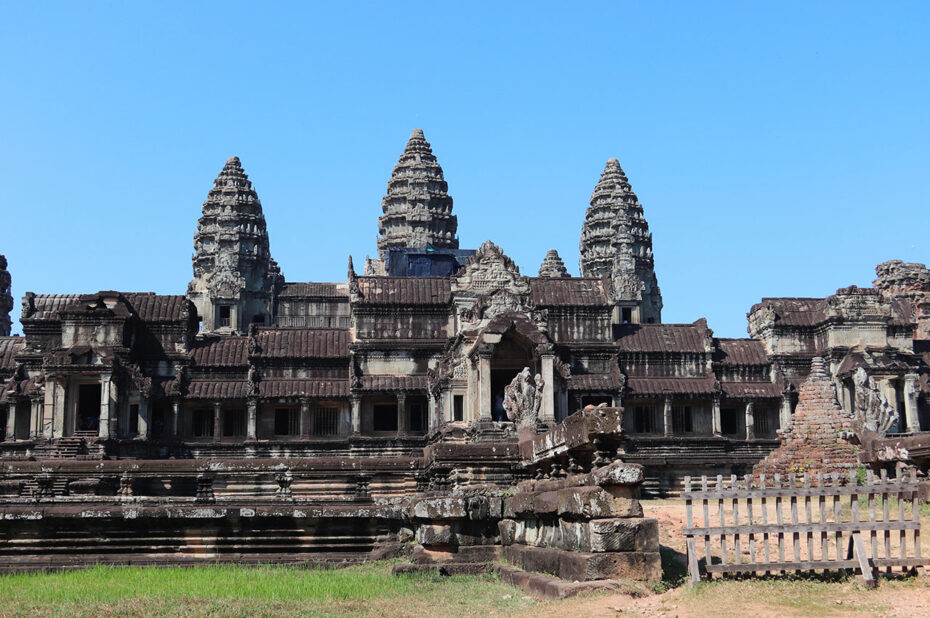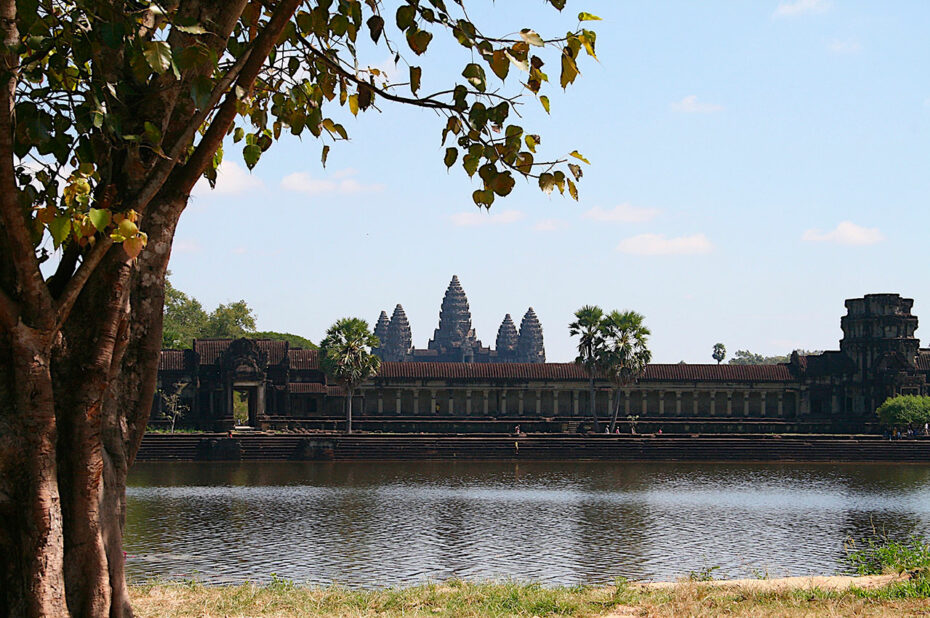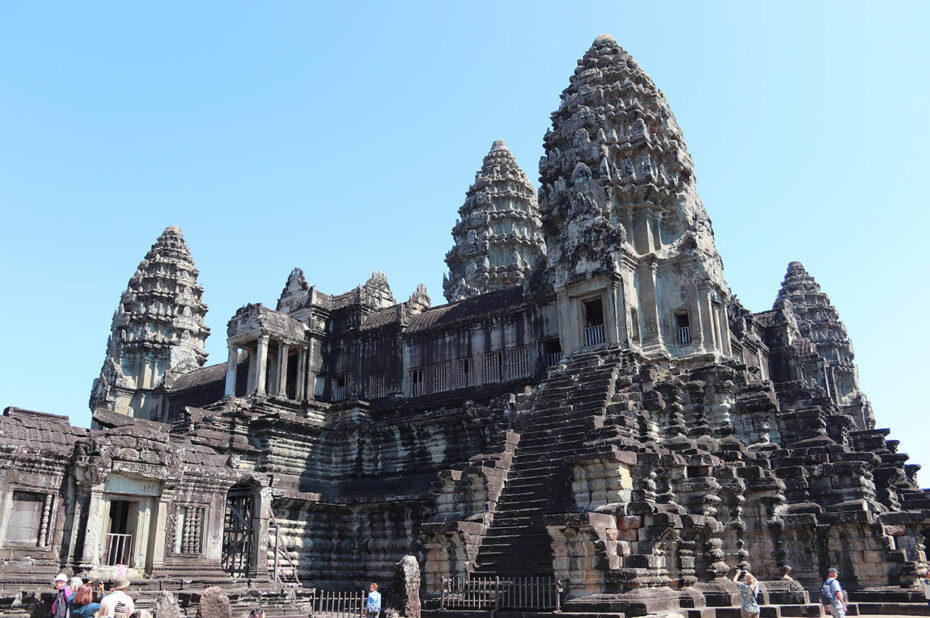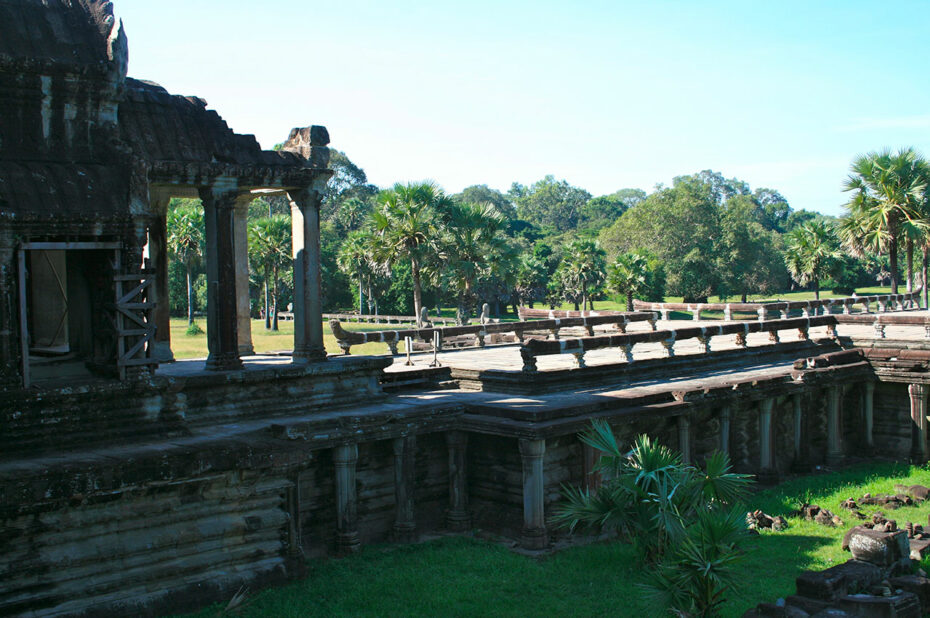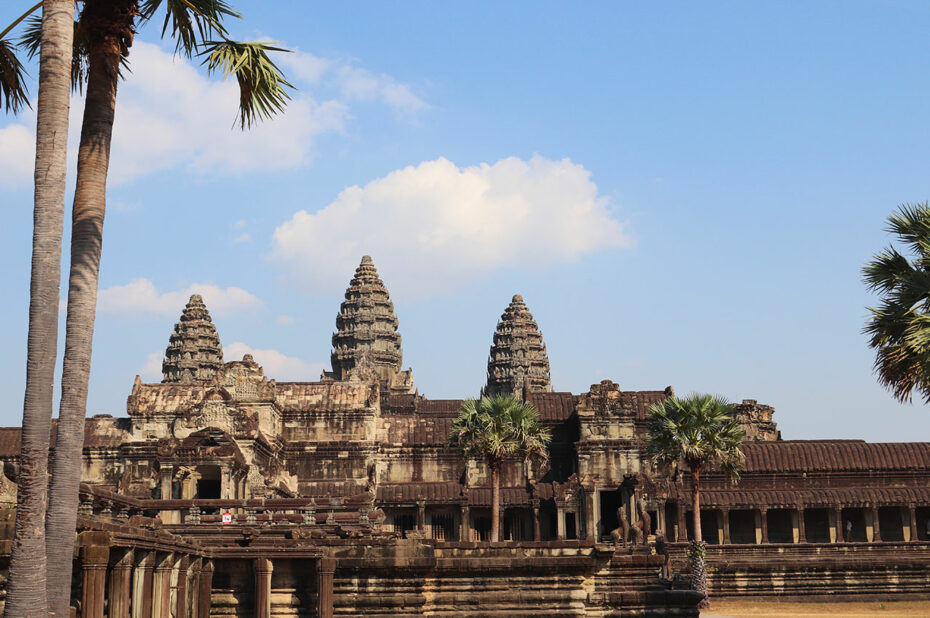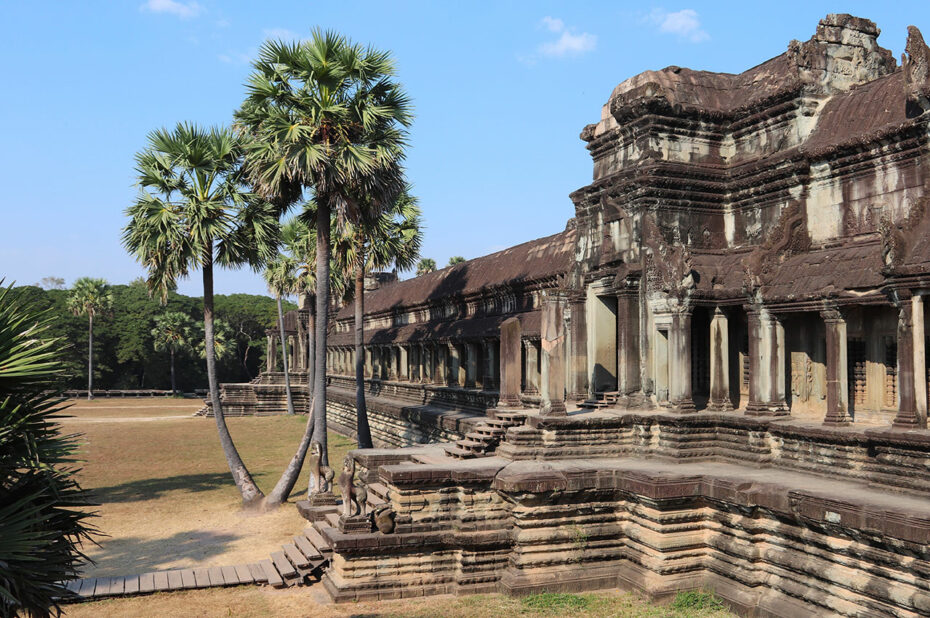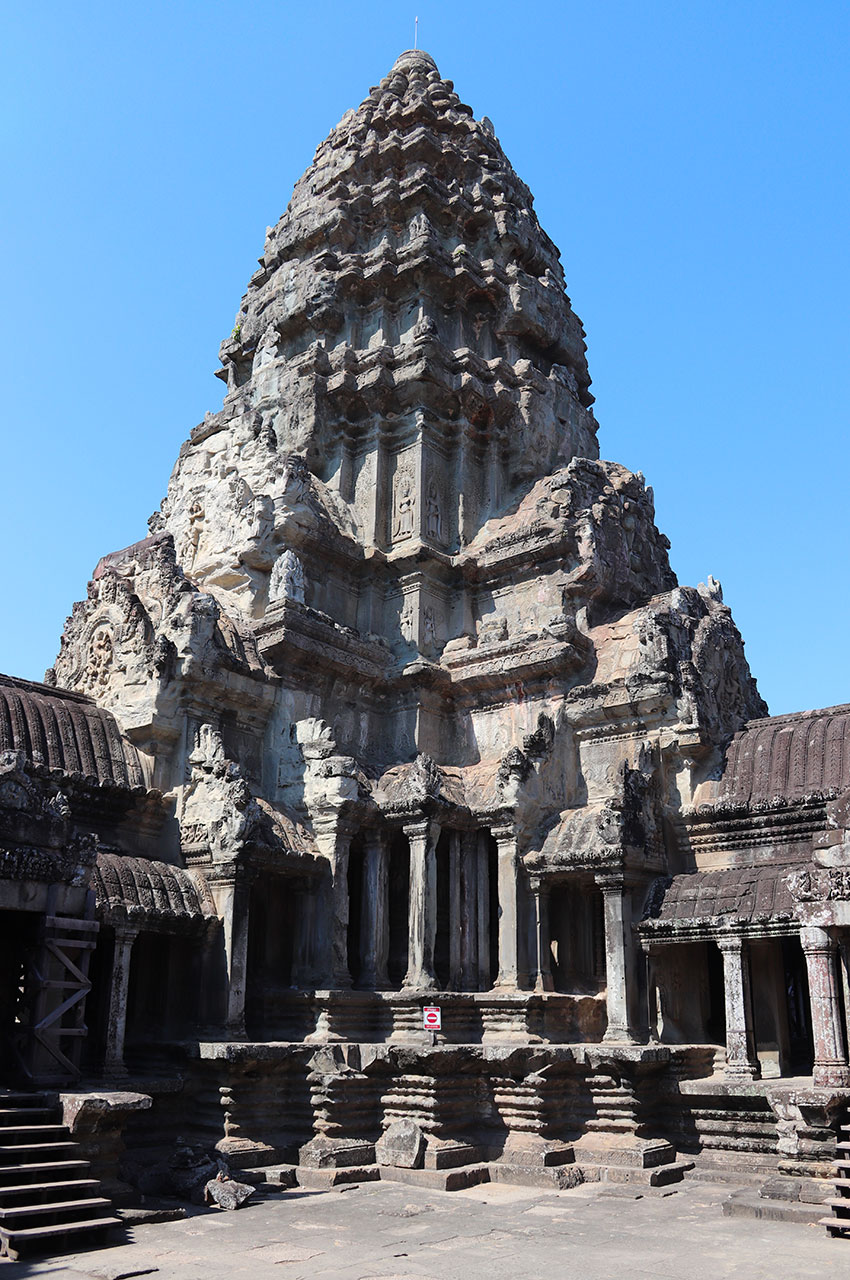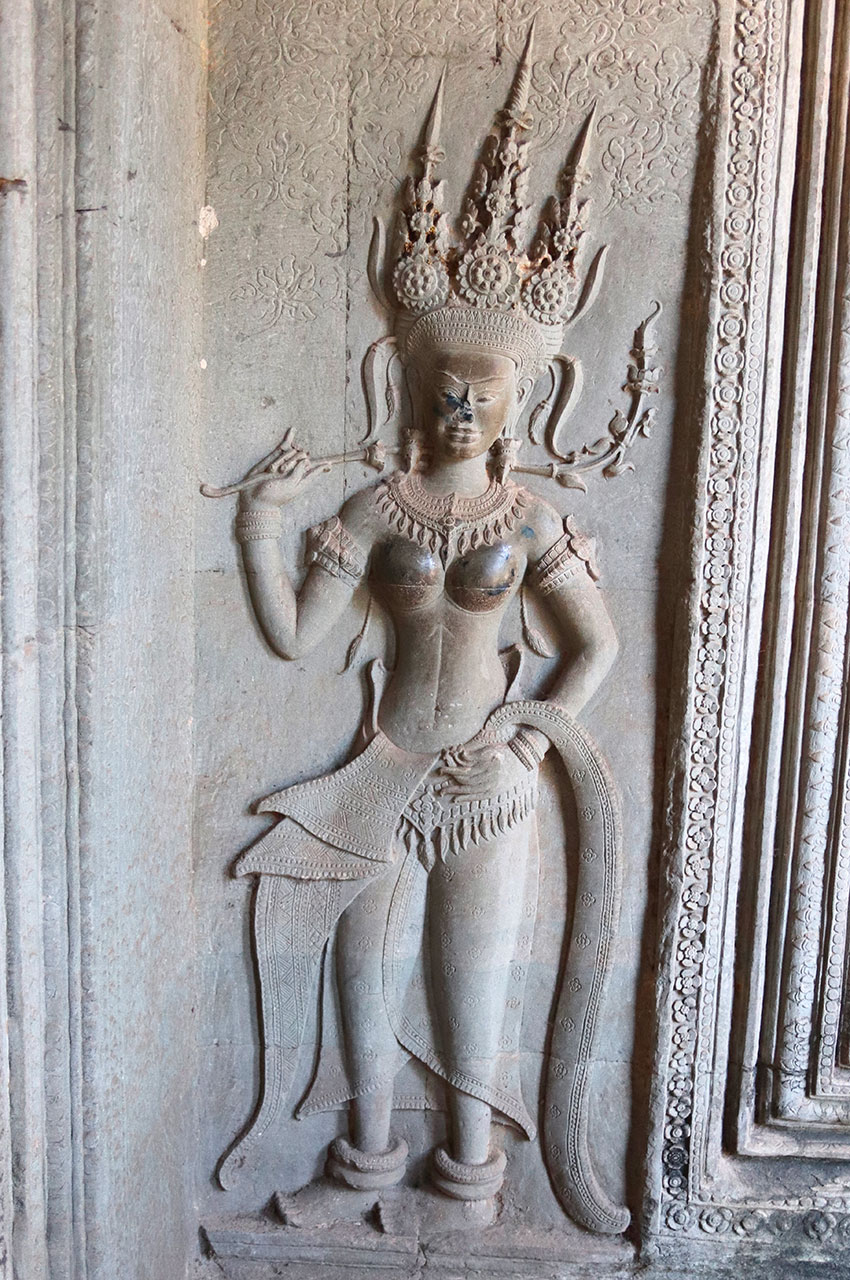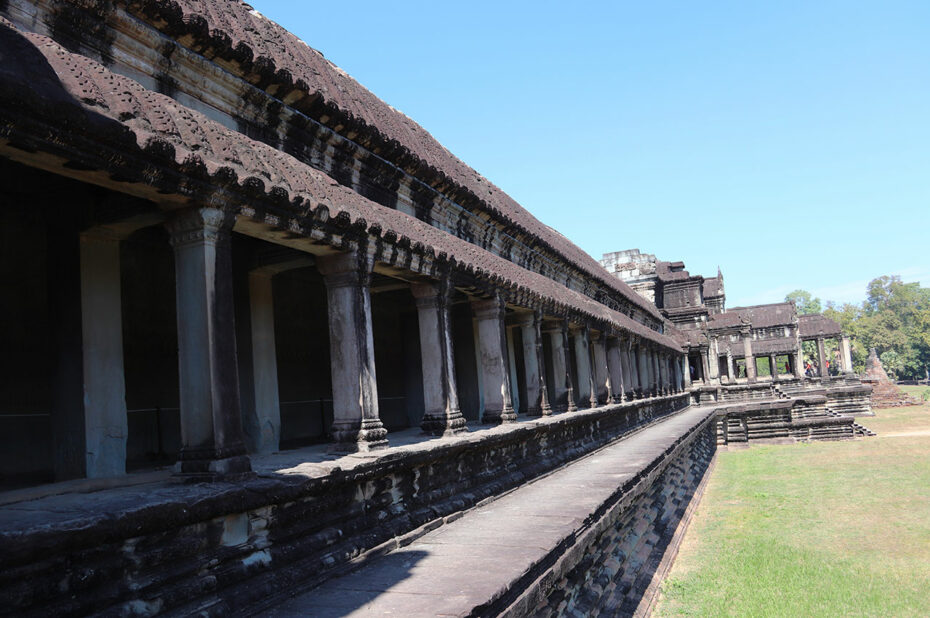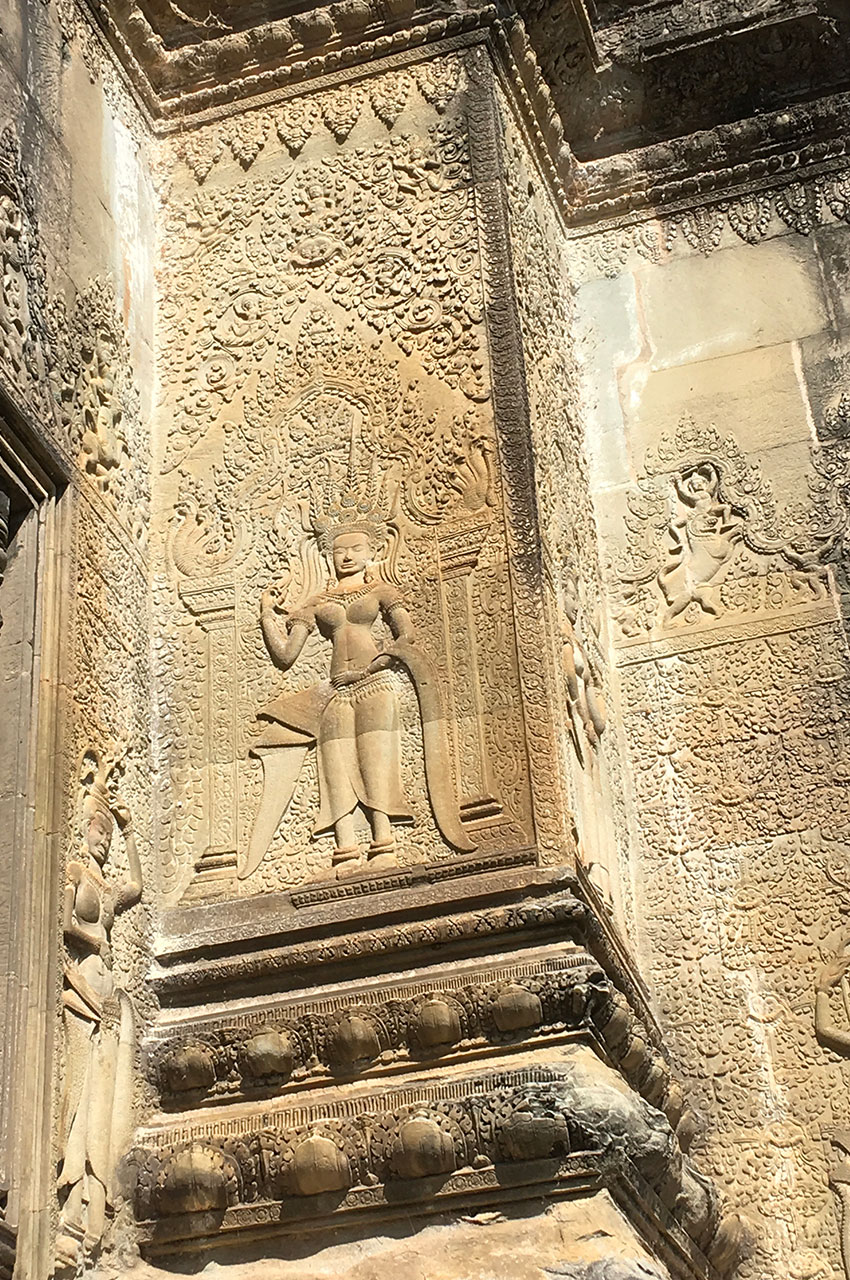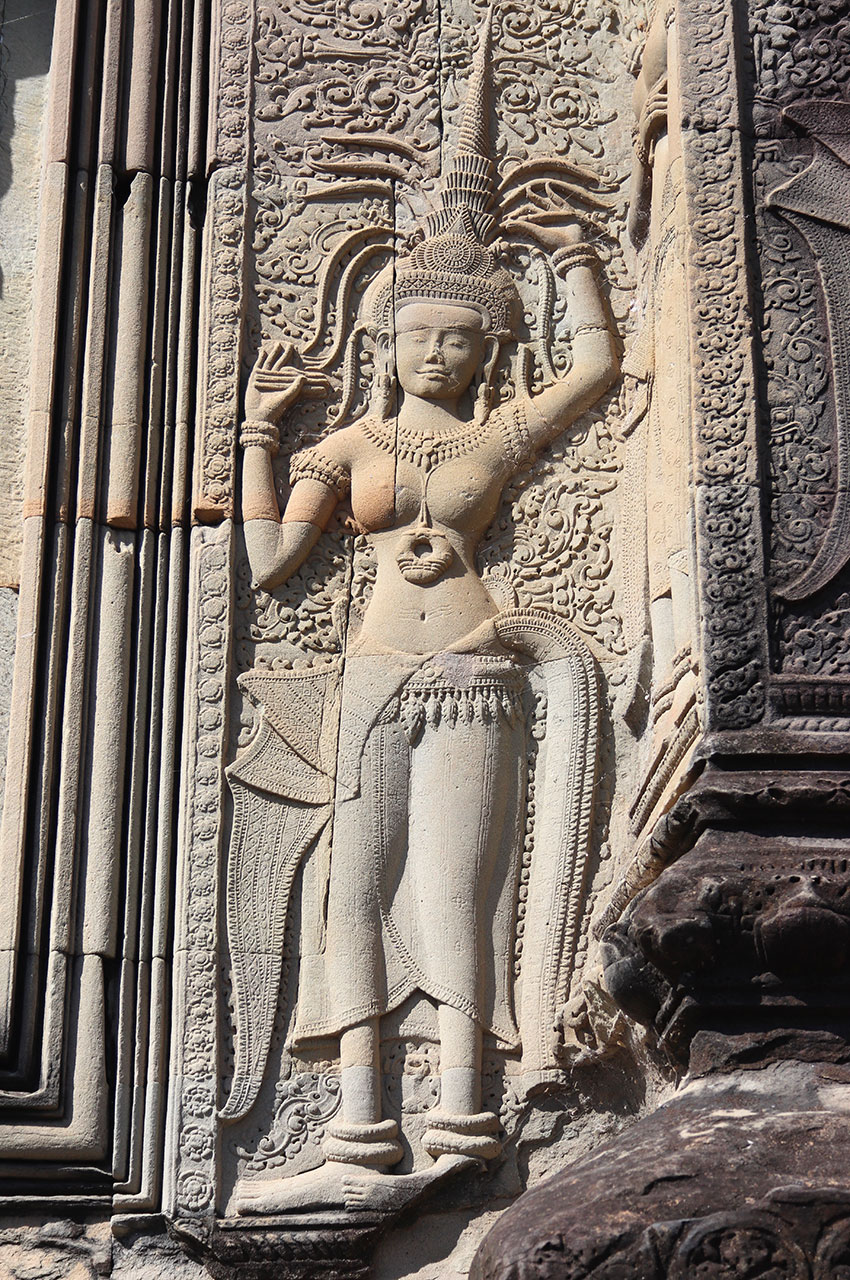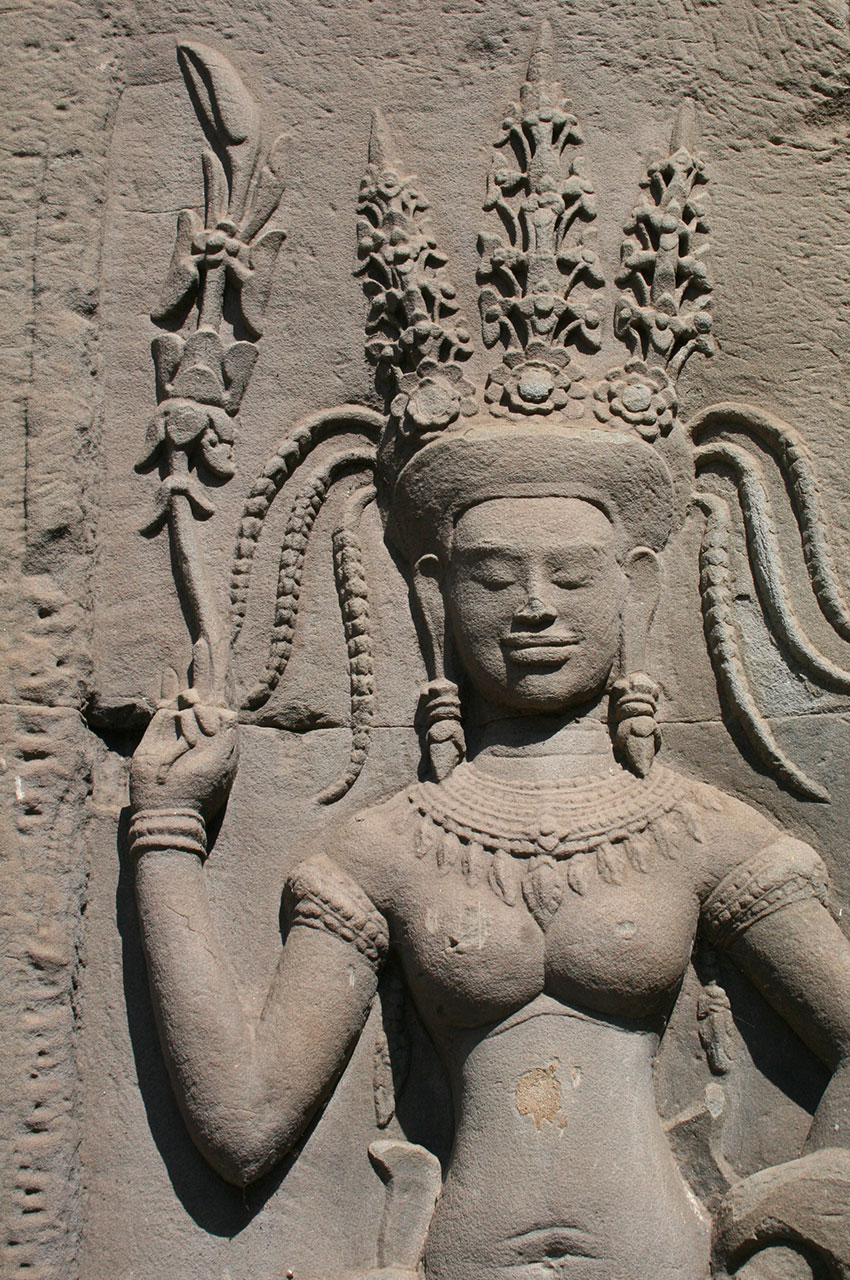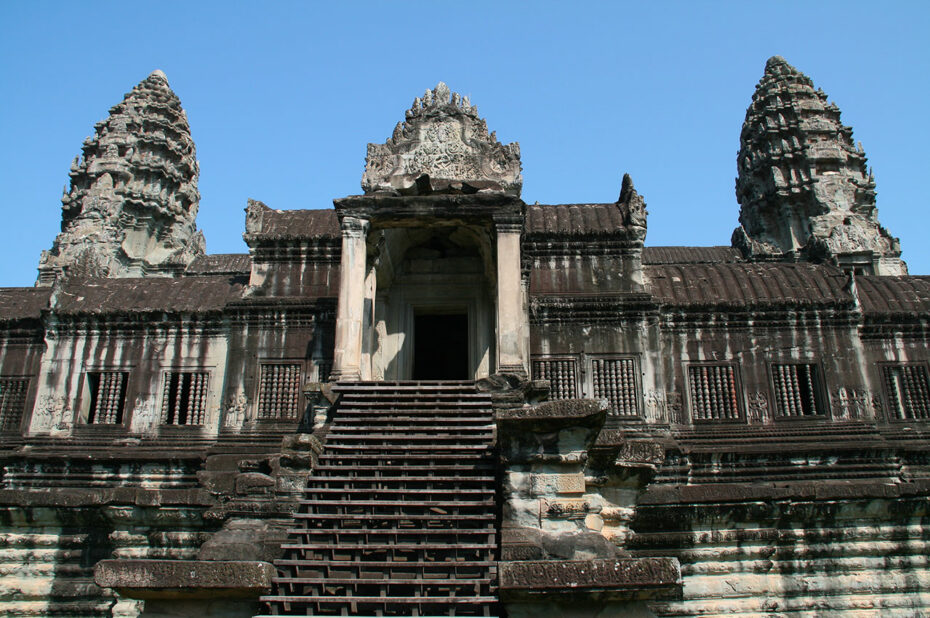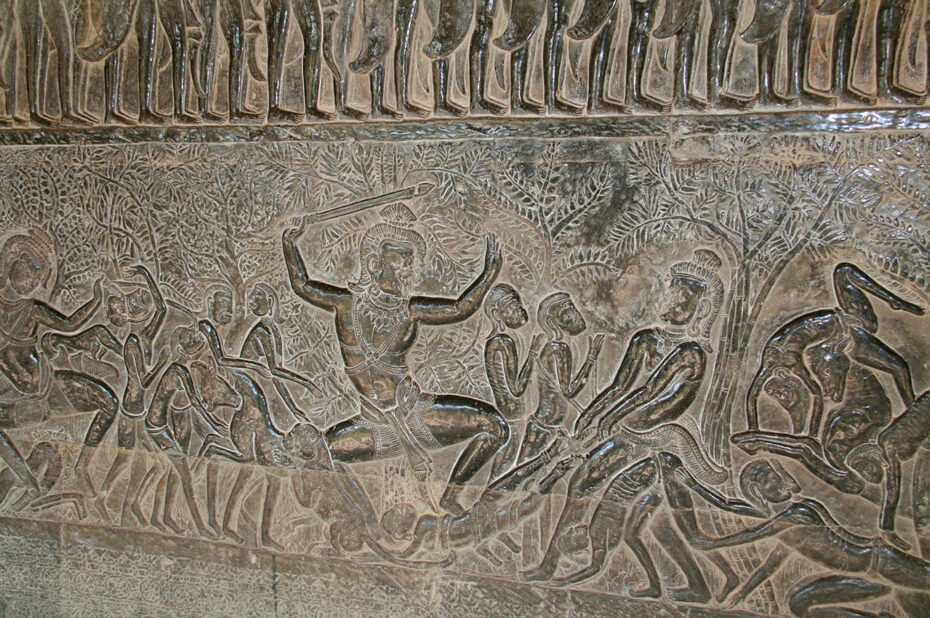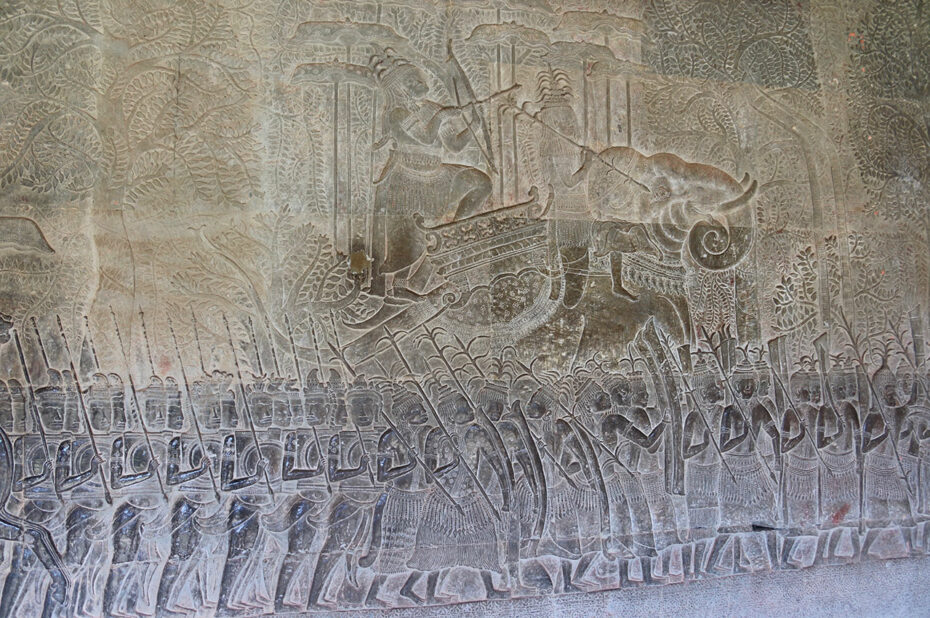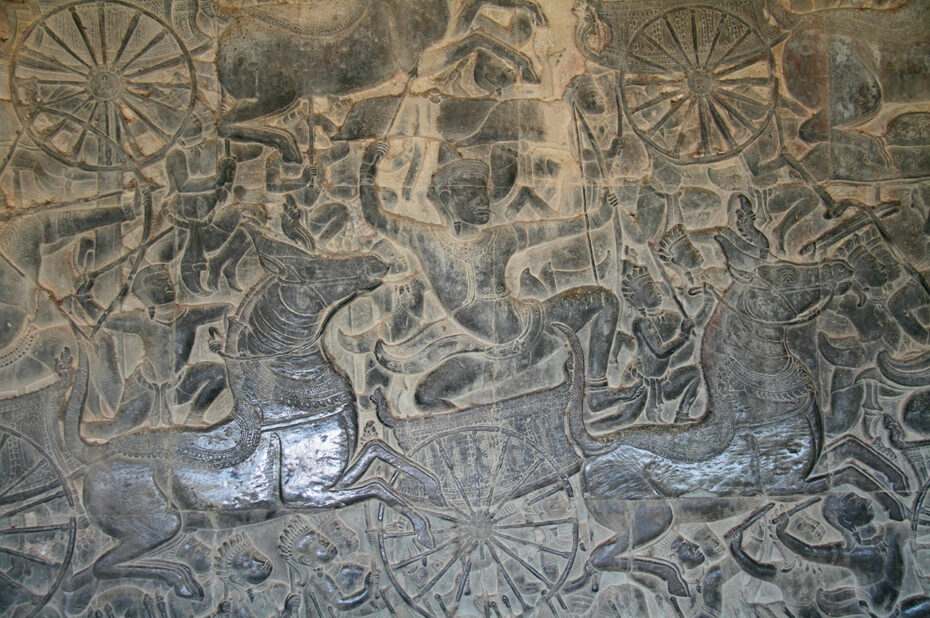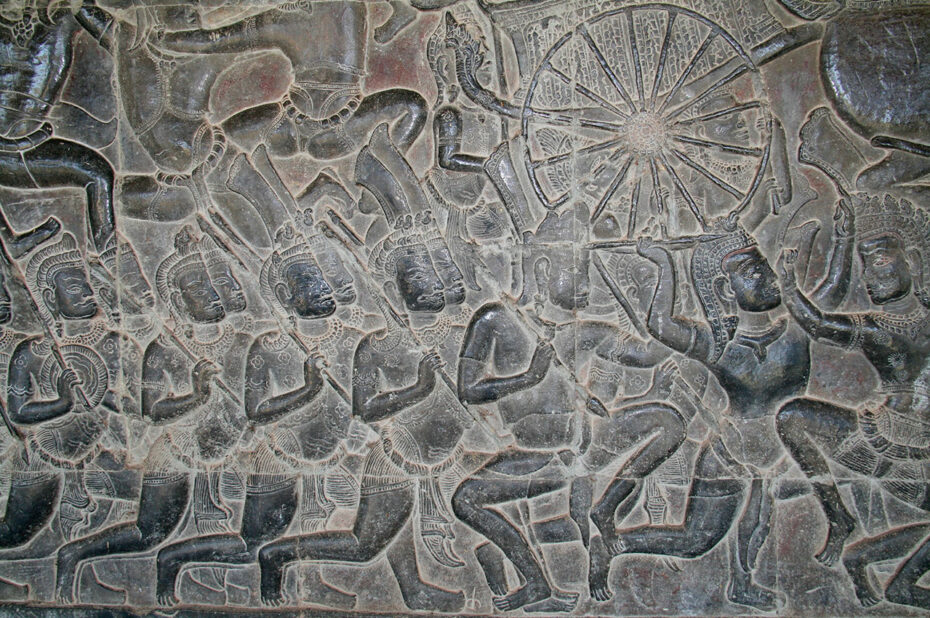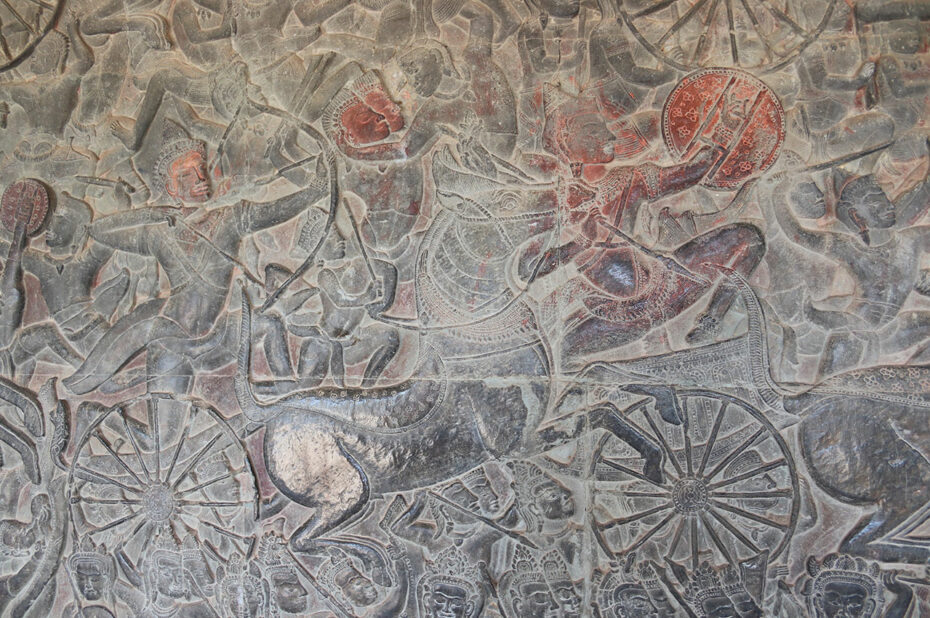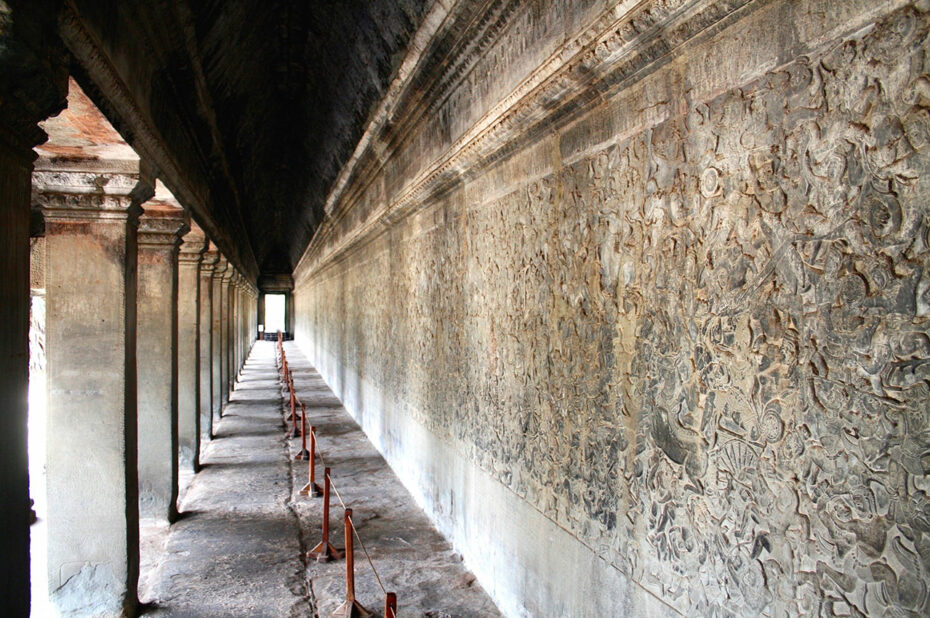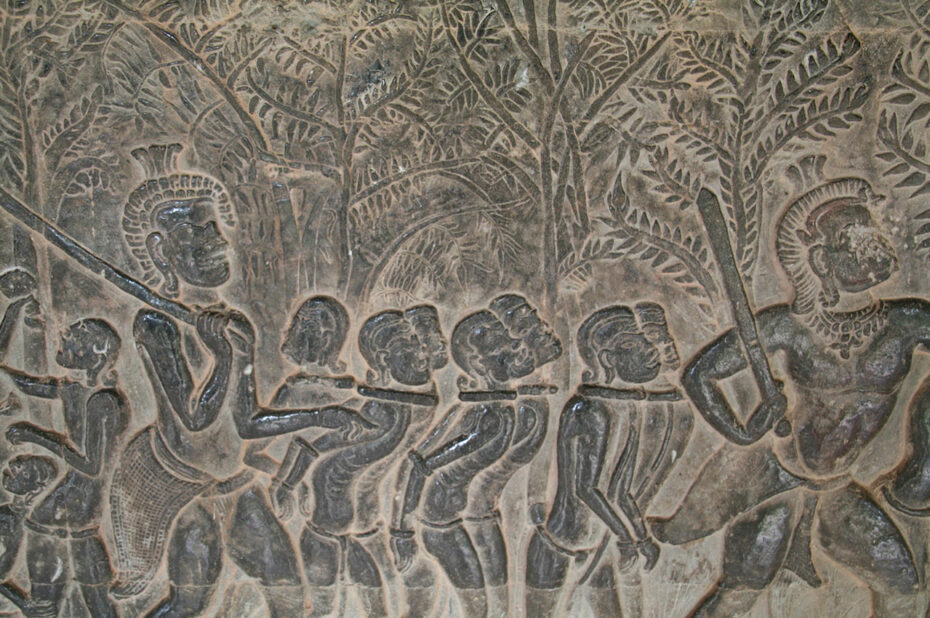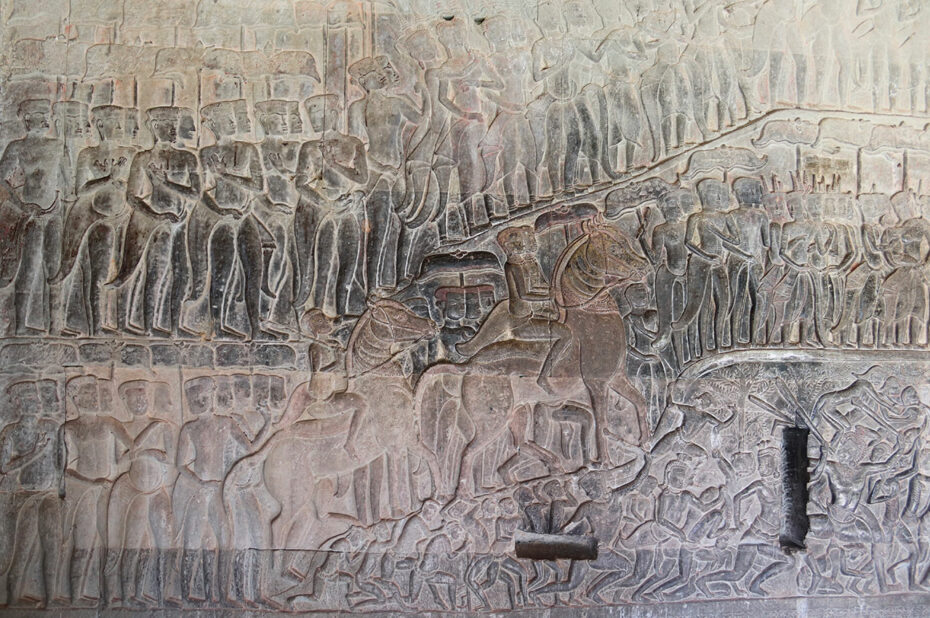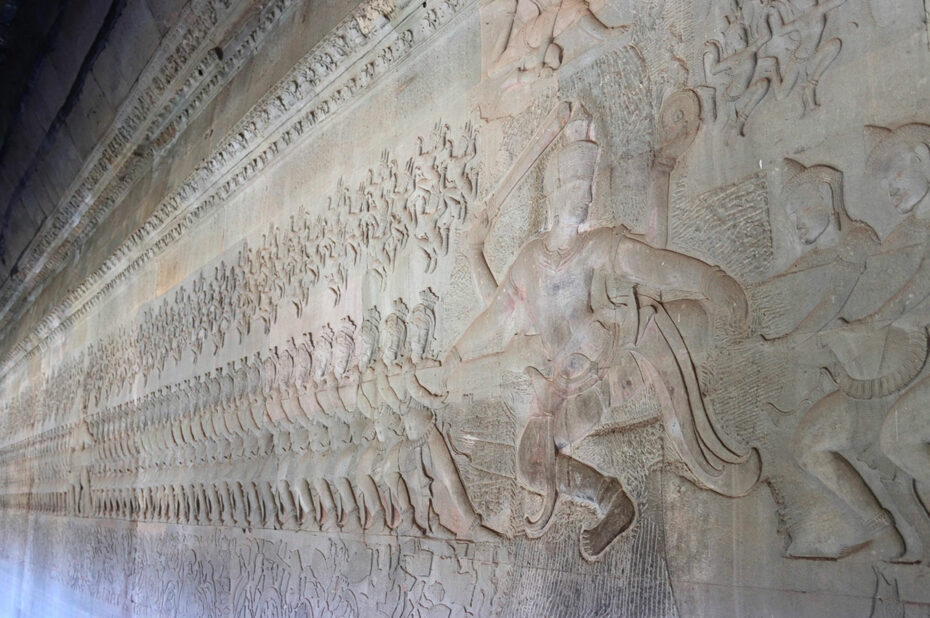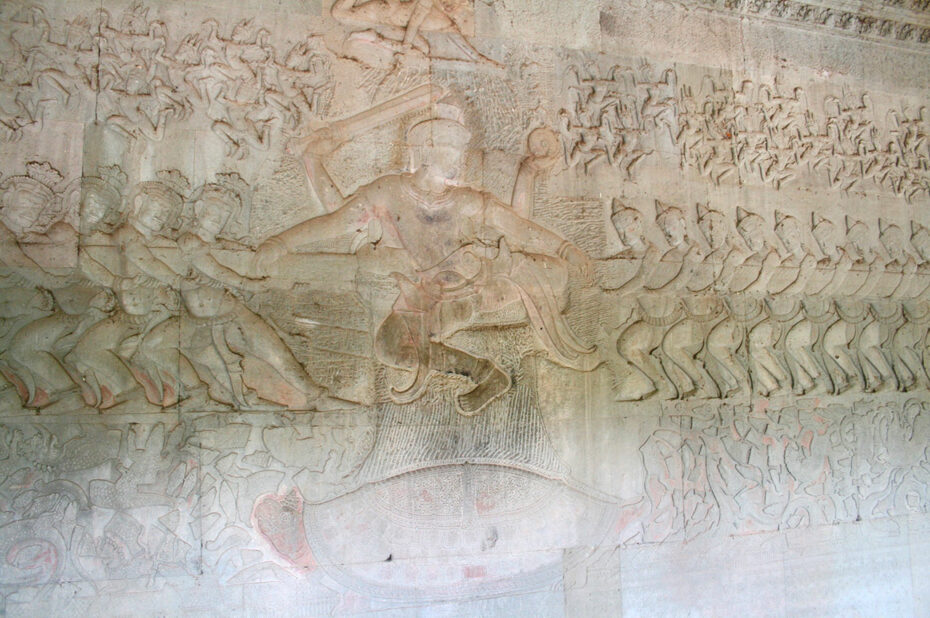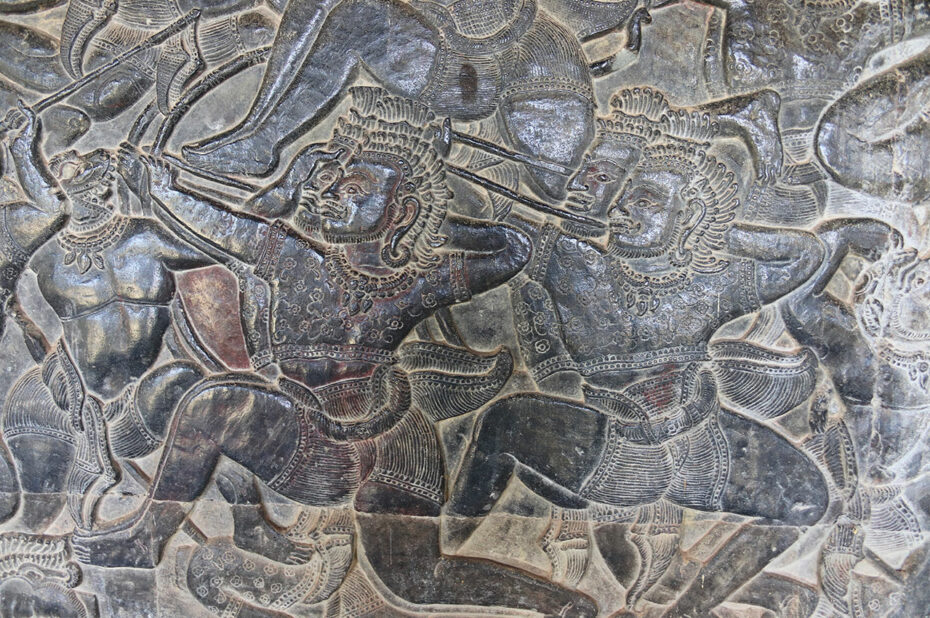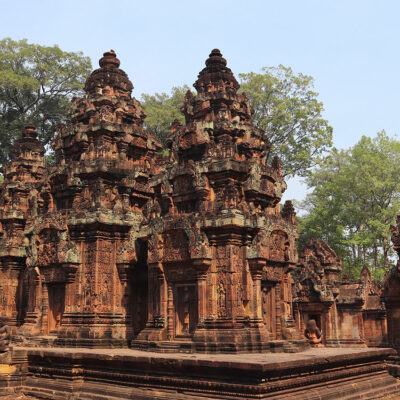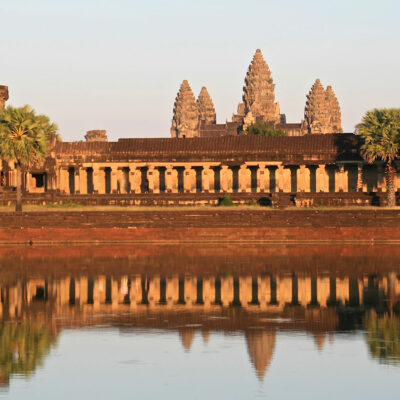
Angkor Wat is without doubt, along with Borobodur in Java, the most famous monument in Southeast Asia. Its fame is justified by its perfection, the quality of its decoration and its harmonious, balanced proportions. It is the largest temple in the Angkor complex. It has become the symbol of Cambodia, and features on its national flag.
Angkor Wat belongs to the category of mountain temples. It features two major characteristics of Khmer architecture: the pyramid (symbolizing Mount Meru, the center of the Hindu universe) and concentric galleries. The temple stands on a terrace and is built on three levels. Each level consists of a terrace surrounded by a gallery.
The wall of the third gallery supports an exceptional series of bas-reliefs arranged in a strip 2 m high and some 800 m long: eight large panels whose themes are taken from the Indian epics, Mahâbhârata and Râmâyana (the battles of Kurukshetra and Lankâ), as well as various sacred texts such as “the churning of the sea of milk”. This great Hindu creation myth is depicted here on a 49 m-long panel. Taking turns pulling on the body of the giant Naga, wrapped around Mount Mandara, the gods and demons make the mountain rotate for 1,000 years, churning the cosmic sea (sea of milk) to produce amrita, the liquor of immortality.
Alongside these mythological scenes, the bas-reliefs illustrate a historical parade of the Khmer army, in which Sûryavarman II is clearly identified. Further on, a second panel depicts the retribution for deeds after death, a scene known as the heaven and hell.
The site’s walls are adorned with numerous deities (devatas) with elaborate hairstyles and enigmatic smiles. Adorned with numerous jewels, the devatas differ in the drape of their long skirts and the prodigious variety of their headdresses and diadems. The highest level is the sanctuary, surmounted at its center by a large pyramid-shaped tower, the 42 m-high Central Prasat. At each corner stands another tower. These five towers form the familiar silhouette of Angkor Wat, 65 m above ground level.
The Angkor Wat temple was visited every year from 2008 to 2020.
Click on the picture to enlarge it and discover its caption.

